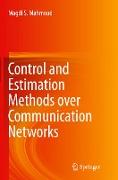- Start
- Determining the Reinforcement Value of Social Consequences
Determining the Reinforcement Value of Social Consequences
Angebote / Angebote:
Determining the Reinforcing Value of Social Consequences and Establishing Social Consequences as Reinforcers: A Replication Positive reinforcement is a fundamental Applied Behavior Analysis procedure that is widely used in both research and practice to change behavior. In this procedure, when a positive reinforcer is applied contingent upon a response, the probability that the response will occur again is increased. As a result, many practitioners who work with children with developmental disabilities rely on the use of positive reinforcers such as preferred edibles, toys and activities to alter the behavior of their clients (Smaby, MacDonald, Ahearn, & Dube, 2007). Often, stimuli that may function as positive reinforcers are identified by conducting preference assessments using stimuli such as consumable items or leisure activities. (Lohrmann-O'Rourke, & Browder, 1998). Though consumable reinforcers are an important part of many behavior change programs, they have numerous disadvantages. These include their susceptibility to satiation and deprivation, as well as problems resulting from delays between the emission of a response and reinforcer delivery (Kelleher & Gollub, 1962). Additionally, in typical settings such as a classroom, consumable reinforcers may be considered socially unacceptable and therefore, not used. In comparison, conditioned social reinforcers such as praise are usually considered acceptable and may not be as easily affected by satiation and deprivation. Some conditioned reinforcers have the additional advantage of requiring no special preparation, and can be delivered quickly. A quick delivery of the reinforcer helps reduce the probability that a behavior untended for reinforcement will occur between the target behavior and the reinforcer delivery, thus, creating inadvertent reinforcement of the wrong behavior
Folgt in ca. 10 Arbeitstagen




